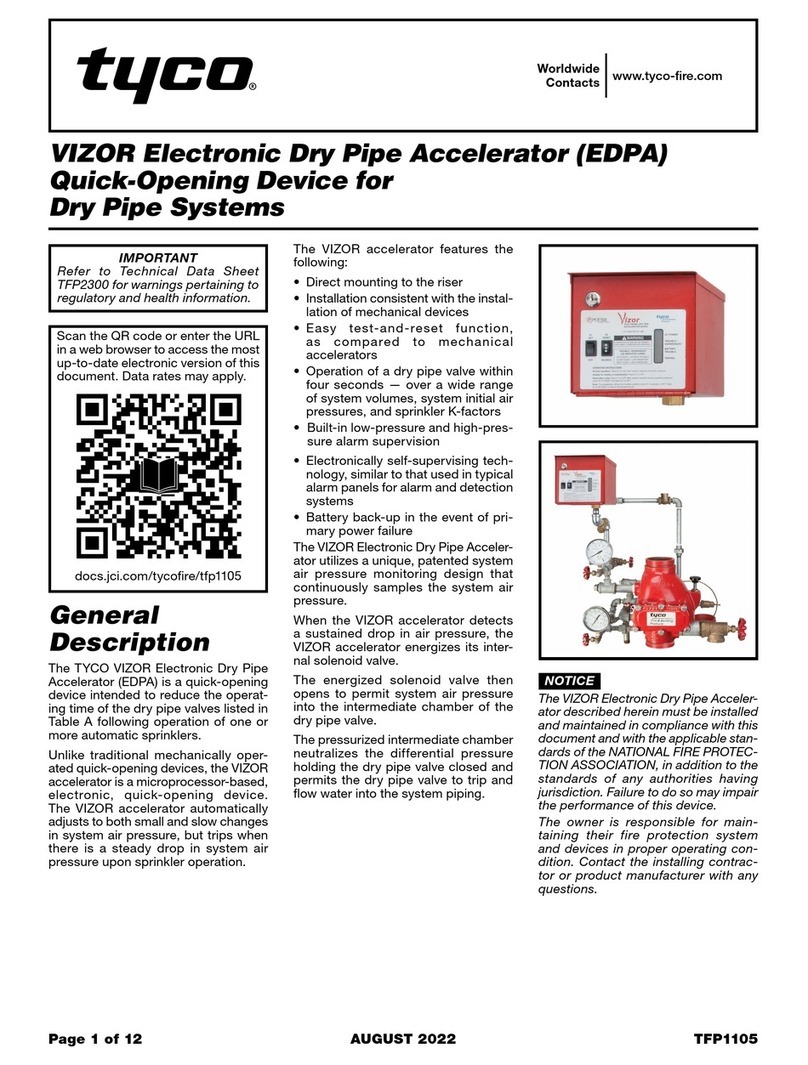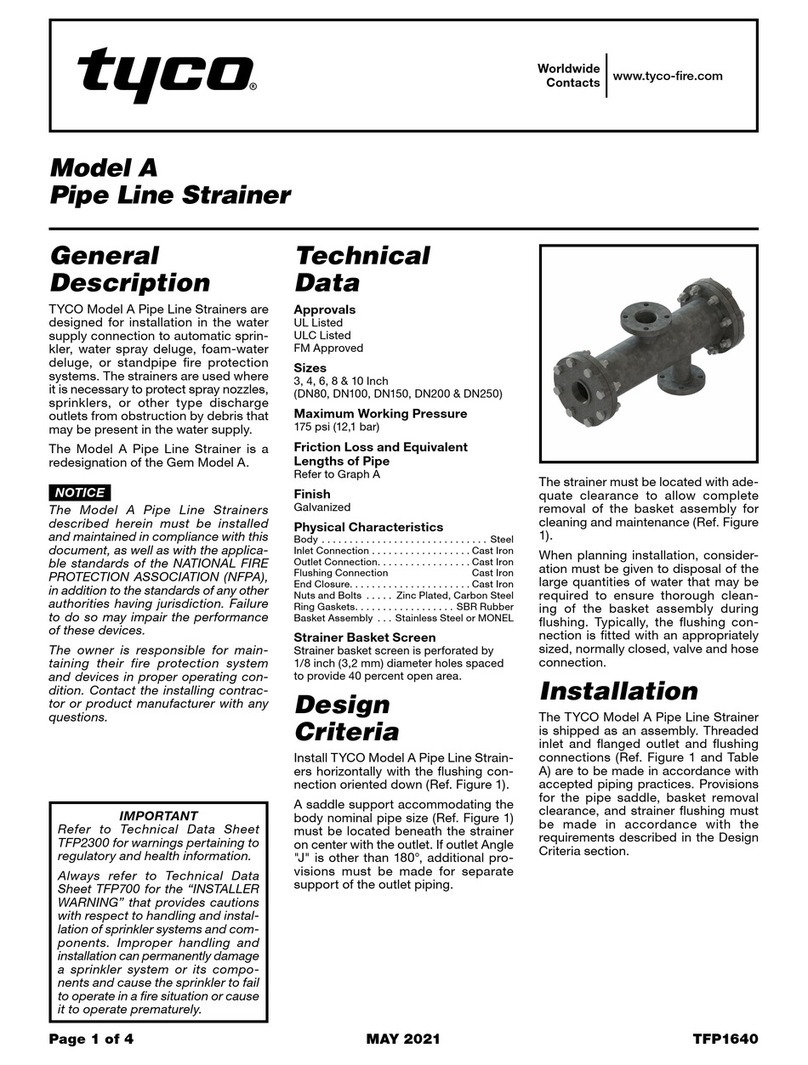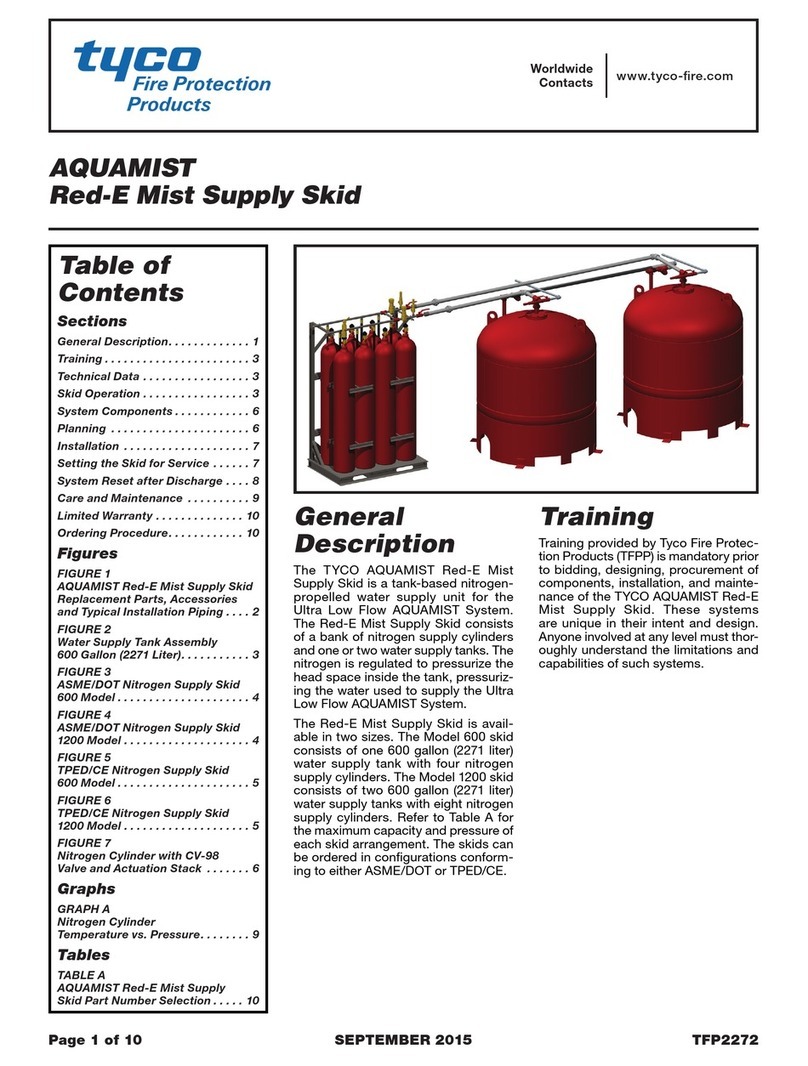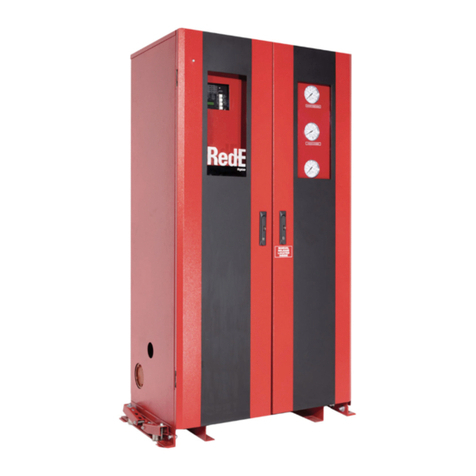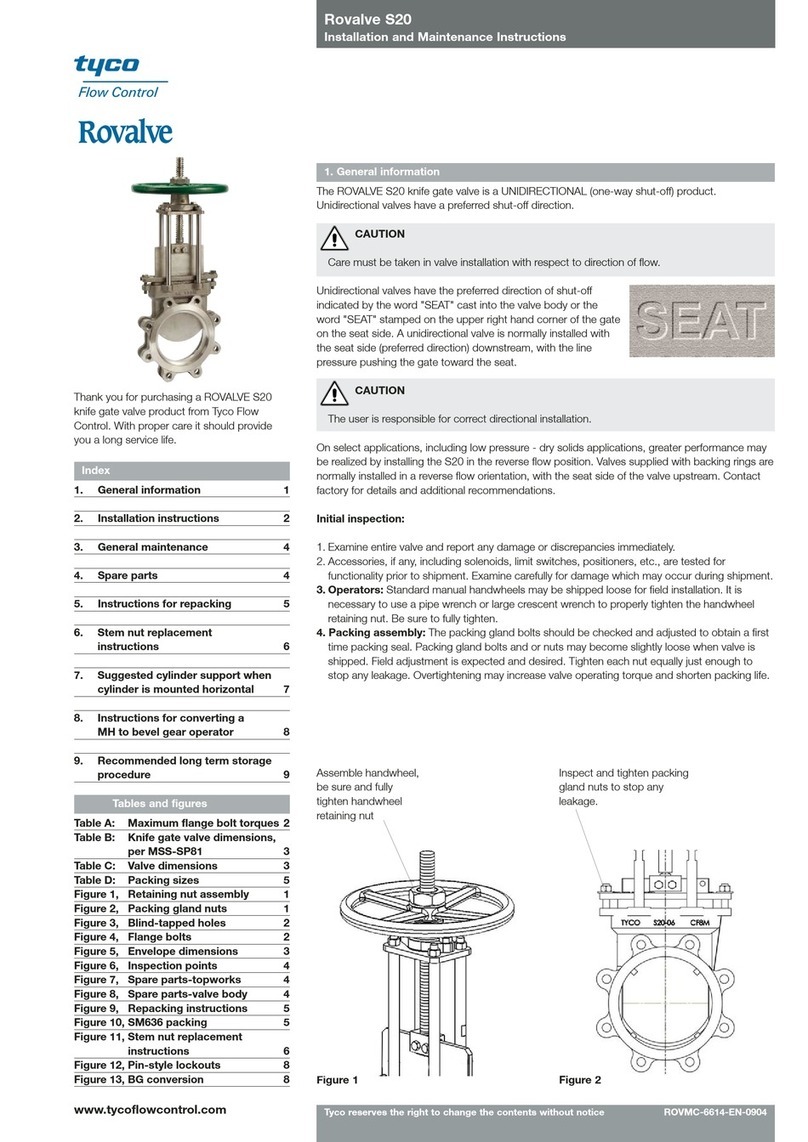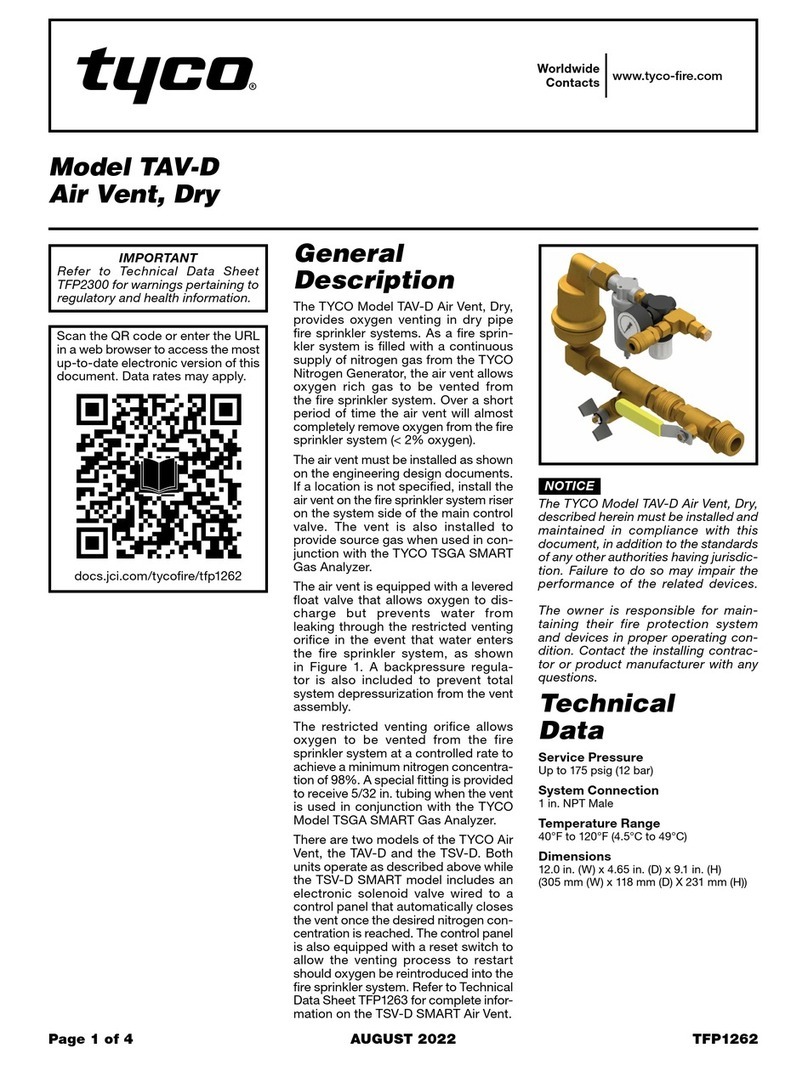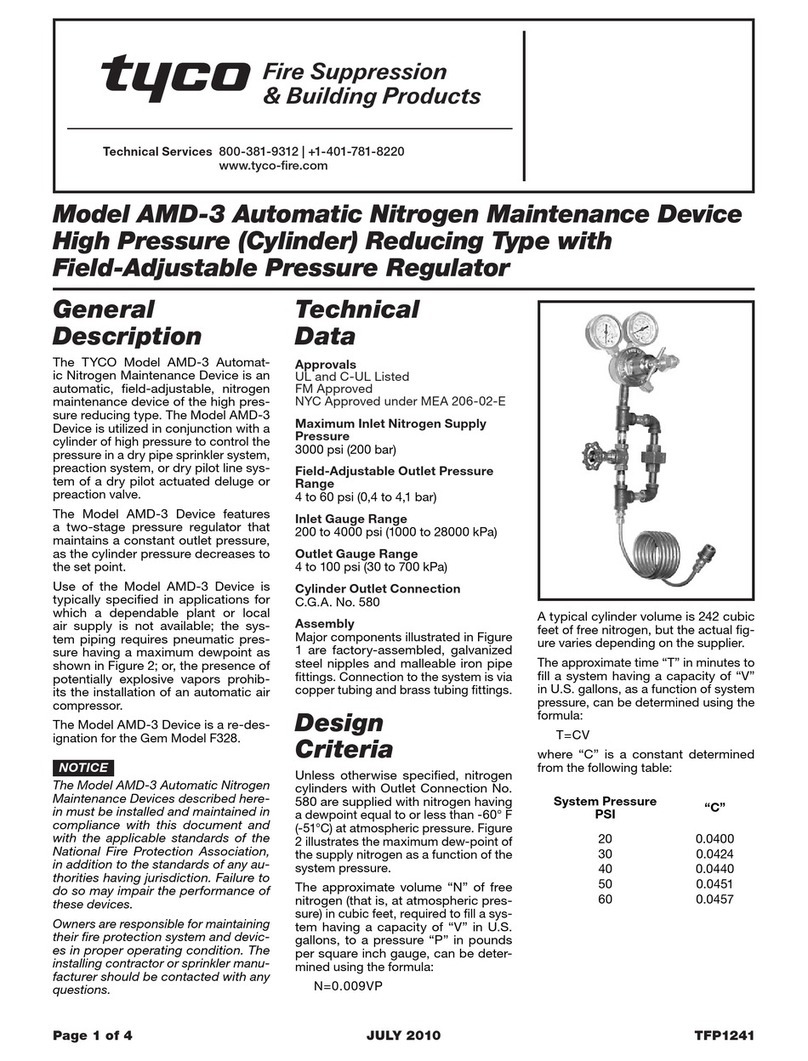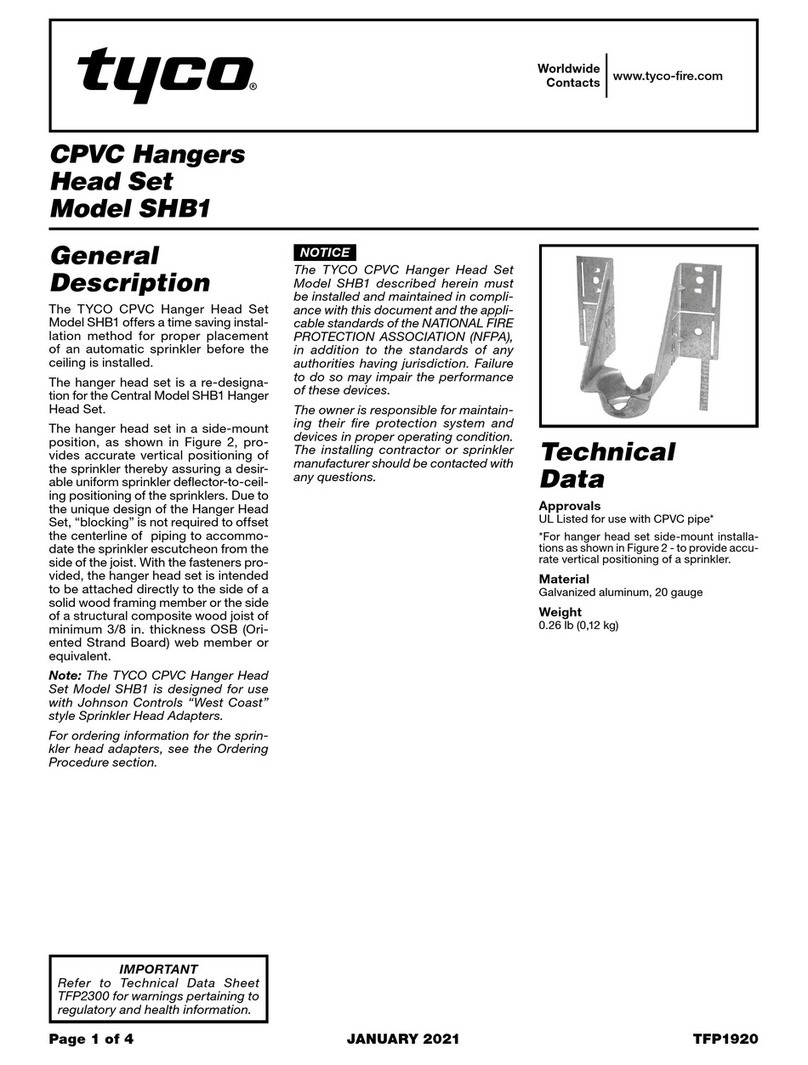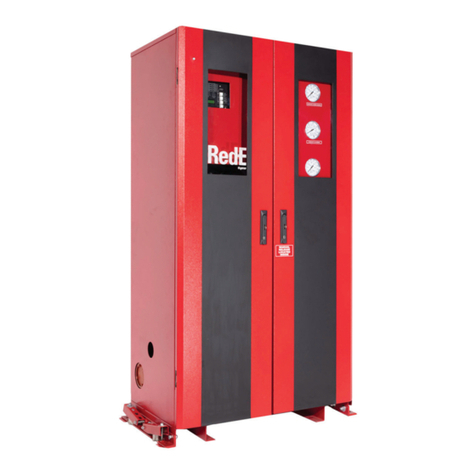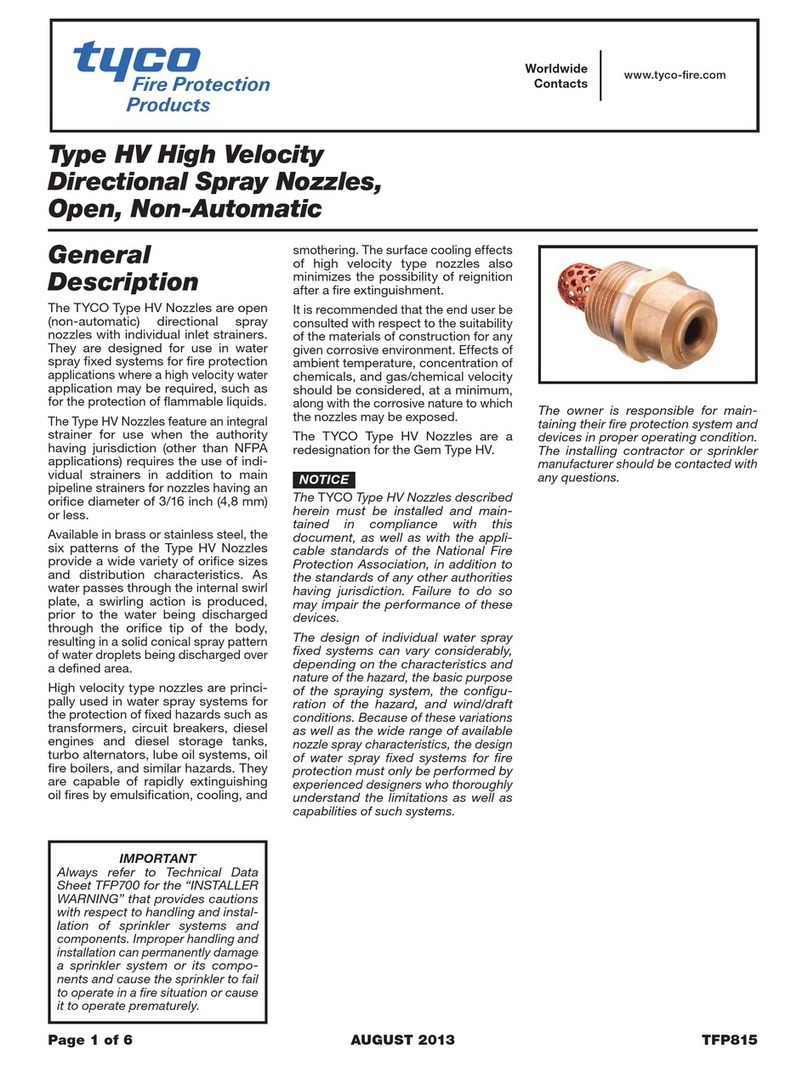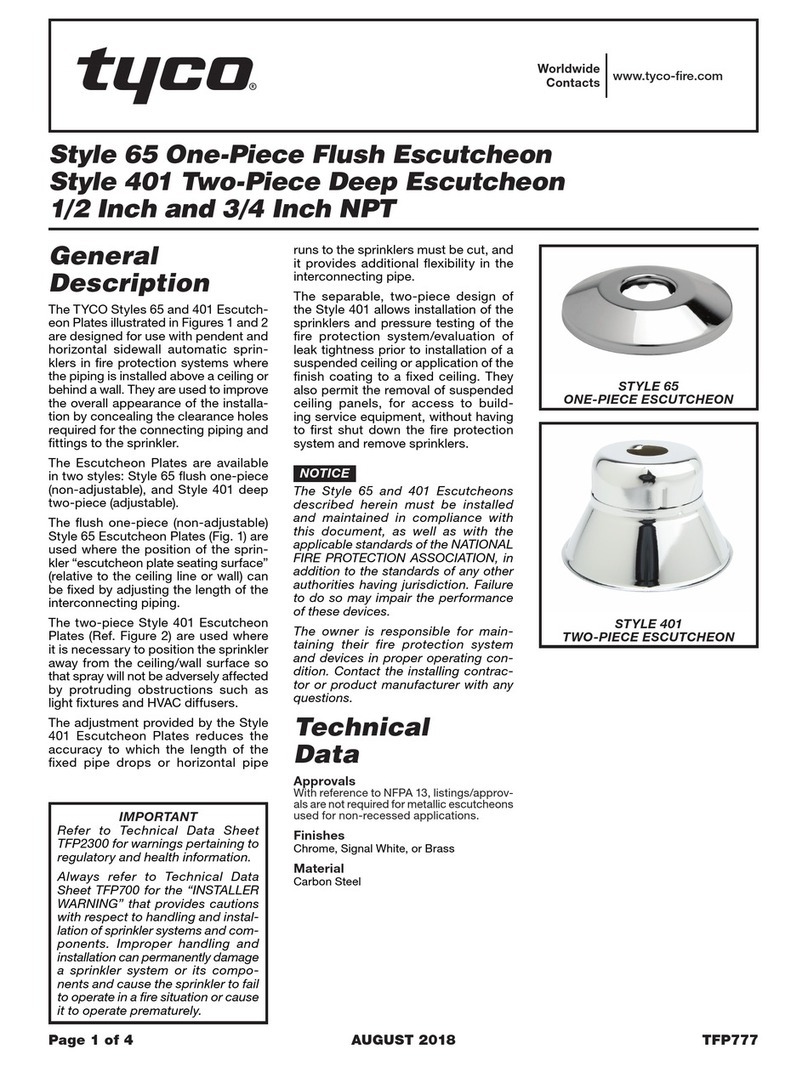
manual pull station. Zone 2 of the Re-
leasing Panel is operated by a Low Air
Pressure Alarm Switch in response to
a loss of system air pressure due to the
opening of an automatic sprinkler. The
Solenoid Valve remains closed until it
is electrically energized by the Releas-
ing Panel.
In order for the Double Interlock Pre-
action System to automatically actu-
ate, two independent events must oc-
cur. Zone 1 of the Releasing Panel
must operate upon automatic opera-
tion of the electric fire detection initiat-
ing circuit or manual operation of the
electric-manual pull initiating circuit,
and Zone 2 of the Releasing Panel
must operate via the Low Air Pressure
Alarm Switch upon loss of air pressure
from the sprinkler system piping, due
to operation of one or more sprinklers.
The Double Interlock Preaction Sys-
tem will automatically actuate only
when both Zone 1 and Zone 2 of the
Releasing Panel have operated, which
in turn will energize the Solenoid
Valve. Accidental loss of system air
pressure (for example: a lift truck acci-
dentally dislodges a sprinkler), or op-
eration of just the fire detection circuit
(for example: an accidental operation
of an electric pull station), will only
cause an alarm, and will not actuate
the system or flood the sprinkler sys-
tem piping.
The 2-l/2 inch (65 mm) Model F445
Electric/Electric Double Interlock Pre-
action System is listed by Underwriters
Laboratories Inc. and Underwriters’
Laboratories of Canada as Double In-
terlock Type Water Control Valves,
and they are approved by Factory Mu-
tual Research Corporation as Refrig-
erated Area Systems for use in refrig-
erated rooms or buildings.
WARNING
The 2-1 I2 inch Model F445 Double
Interlock Preaction System with the
associated trim described herein must
be installed and maintained in com-
pliance with this document, as well as
with the applicable standards of the
National Fire Protection Association,
in addition to the standards of any
other Authorities Having Jurisdic-
tion. Failure to do so may impair the
integrity of the associated devices.
The owner is responsible for main-
taining their fire protection system
and devices in proper operating con-
dition. The installing contractor or
manufacturer should be contacted
relative to any questions.
The 2-l/2 inch (65 mm) Model F445
Electric/Electric Double Interlock Pre-
action System, as well as its associ-
ated trim, is rated for use at a minimum
service pressure of 20 psi (1,4 bar)
and a maximum service pressure of
175 psi (12,l bar).
The following is a list of the Technical
Data Sheets for the valves and de-
vices which are required as part of the
Double Interlock Preaction System:
Deluge Valve . . . . . . TD114
Swing Check Valve . . . . . TD318
Solenoid Valve . . . . . . . TD119
Manual Control Station . . . TD121
Low Air Pressure Alarm
Switch . . . . . . . . . . . . TD213
Waterflow Pressure Alarm
Switch . . . . . . . . . . . . TD213
The following is a list of the Technical
Data Sheets for the recommended
system pressure maintenance devices
to be used as part of the Double Inter-
lock Preaction System:
System Pressure Maintenance De-
vice (select one)
-Air Pressure Reducing Type
. . . . . . . . . . . . . . TDlll
-Nitrogen Press. Reducing Type
. . . . . . . . . . . . . . TD113
System Design Considerations
The automatic sprinklers, as well as
the cross-zone deluge valve releasing
panel (automatic control unit), fire de-
tection devices, manual pull stations,
and signaling devices, which are util-
ized with the Electric/Electric Double
Interlock Preaction System must be
UL Listed, ULC Listed, C-UL Listed, or
FM Approved, as applicable.
NOTE
When the Solenoid Valve is energized
via the cross-zone controlpanel to op-
erate the F445 Valve. the Solenoid
Valve must remain energized in order
for the F445 Valve to remain open.
Because a double interlock preaction
system requires time for a drop in sys-
tem air pressure to occur (concurrently
with the response time for the separate
fire detection system), before it will
allow water to enter the system piping,
this system has characteristics similar
to a dry pipe sprinkler system. There-
fore, the system design considerations
for a dry pipe system are normally ap-
plied to a double interlock preaction
system - including a 30% increase in
-2-
design area and prohibition of gridded
system piping.
The deluge valve, swing check valve,
and all interconnecting piping must be
located in a readily visible and acces-
sible location and in an area which can
be maintained at a minimum tempera-
ture of 4O”F/4”C.
NOTE
Heat tracing is not permitted for the
deluge valve, swing check valve, or
any of the interconnecting piping.
Heat tracing can promote the forma-
tion of hardened mineral deposits
which can prevent system operation.
Heat tracing can also result in dam-
age to the F445 Deluge Valve Dia-
phragm Assembly.
In planning the installation, considera-
tion must also be given to the disposal
of the large quantities of water which
may be associated with draining the
system or performing a flow test.
Installation configuration and clear-
ance dimensions are given in Figure B.
The grooved inlet and outlet connec-
tions of the F445, as well as the F52
Swing Check Valve are cut in accord-
ance with Gruvlok standard groove
specifications for steel pipe, and they
are suitable for use with grooved end
pipe couplings that are listed or ap-
proved for fire protection service.
In order to readily perform the System
Inspection Procedure described in the
Care and Maintenance section, it is
recommended that a System Shut-Off
Valve be installed above the Model
F52 Swing Check Valve, as shown in
Figure A. The System Shut-Off Valve
should be a listed or approved (as ap-
propriate) indicating valve with a su-
pervisory switch to monitor the nor-
mally open position.
System Air Pressure Requirements
The recommended system air pres-
sure for the Electric/Electric Double
Interlock Preaction System is nomi-
nally 15 psi (1,O bar), irrespective of
the water supply pressure. The use of
a higher system air pressure may in-
crease water delivery time, and the
use of a lower system air pressure may
prevent clearing the alarm of the Low
Air Pressure Alarm Switch (Item 19 -
Fig. C) on increasing pressure. The
Low Pressure Alarm Switch is field set
to alarm at nominally 12 psi (0,8 bar)
on decreasing pressure. It is recom-
mended that the system air pressure
be maintained by one of the following
methods.
l A maximum 200 psi (13,8 bar) plant
air supply in combination with the
Model F324 Air Maintenance Device
described in TDl 11.
l A maximum 3000 psi (206.9 bar)
